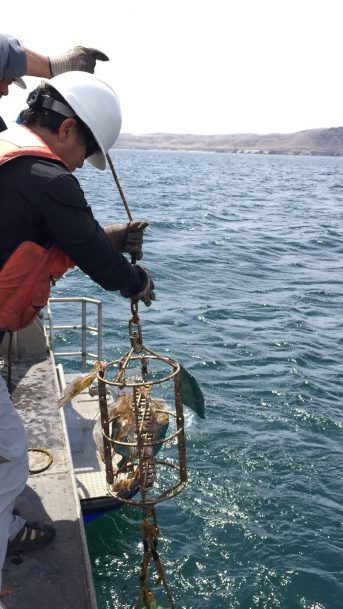Passive samplers retrieved from Channel Islands for international oceanic pollutants study

SCCWRP and its partners in August successfully retrieved two sets of passive sampling arrays that were deployed over a two-month period near the Channel Islands to help establish baseline concentrations of persistent organic pollutants (POPs) in coastal ocean water around the world.
SCCWRP was invited to take part in establishing the international POPs baseline by the Aquatic Global Passive Sampling Network (AQUA-GAPS), a consortium of scientists and resource managers working to create a global database of oceanic water quality.
The passive sampling arrays were deployed at two locations – the windward side of Santa Cruz Island and in Bechers Bay, a protected anchorage of Santa Rosa Island – that represent areas of the Southern California Bight minimally influenced by discharges from the mainland. The passive samplers were suspended about 4 meters from the ocean surface in metal cages; an anchor was used to keep the cages from drifting.
Passive samplers are constructed using widely available polyethylene and silicone materials, and offer a cost-effective way to measure low levels of chemical contaminants.
During the deployment, researchers tested various materials, and will use different analysis methods to compare performance.
POPs are problematic because they are resistant to breakdown and can accumulate to high levels in organisms; they encompass multiple chemical classes, including PCBs, DDTs and flame-retarding PBDEs – all now banned in the United States.
POPs are problematic because they are resistant to breakdown and can accumulate to high levels in organisms; they encompass multiple chemical classes, including PCBs, DDTs and flame-retarding PBDEs – all now banned in the United States.
More news related to: Emerging Contaminants